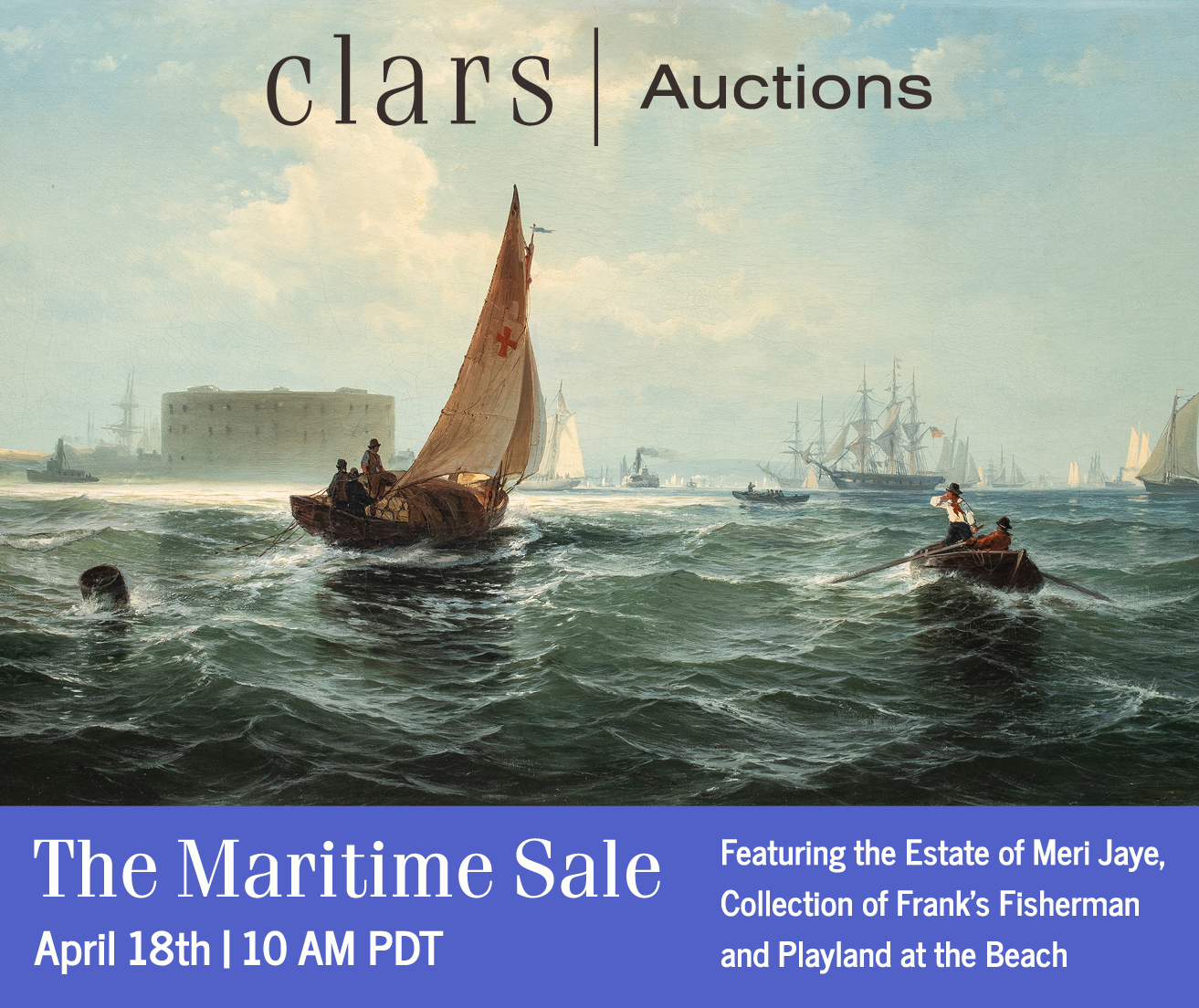Native American Art
May 4th, 2011
The catalog cover lot, a painted hide shirt from the Great Lakes region and dating from the first half of the 18th century, was purchased for $362,500 for the Minneapolis Institute of Arts by Joe D. Horse Capture, associate curator of Native American art, in the salesroom. |
Christie's, New York City
by Matthew Menkevich
Photos courtesy Christie's
On the afternoon of January 18, Christie's kicked off the series of winter Americana auctions with a sale of Native American art. Curated by New York City dealer John Molloy, this auction-his first-was held in a small salesroom on the third floor at Rockefeller Center. A small number of dealers and collectors witnessed most lots go to phone bidders from Colorado and Oregon.
Buying was selective. Slightly under half the lots were sold, most of them, with a few remarkable exceptions, within or just above their estimates. Of the 147 lots offered, 62 sold for a total of $1,116,187. The sale was 42% sold by lot and 58% by dollar.
There were some stars. The cover lot, a painted hide shirt from the Great Lakes region and dating from the first half of the 18th century, was purchased for $362,500 (includes buyer's premium) for the Minneapolis Institute of Arts (MIA) by Joe D. Horse Capture, associate curator of Native American art, in the salesroom. Horse Capture was very excited to add it to the MIA collection, since the majority of similar artifacts are found in European collections, primarily in France.
The shirt is made of soft, thin, tanned hide with finely cut fringe along the neck, edges, and bottom. Depicted on the back, front, and arms are abstract, triangular designs painted in red and outlined in black. Recently discovered in France, this shirt will be featured in an upcoming traveling exhibition at the Denver Art Museum's newly remodeled Native American Gallery. According to the shirt's previous owner, Donald Ellis, this was a reasonable price for such an important purchase.
There was interest in the finer Hopi jars, Navajo blankets, and kachina carvings offered. An almost monochromatic Pueblo manta, made of handspun wool in subtle diamond twill variations of black and indigo blue, 38" x 53", sold to a phone bidder for $11,875, well above its $5000/7000 estimate. An equally exquisite Lakota buffalo hide possible bag, 14" x 23½", decorated with glass beads of dark blue, yellow, red, white, and green, went at $11,250 (est. $6000/8000). (A possible bag is a 19th-century trader interpretation of the name Amerindians gave for a bag for carrying every possible thing.) Navajo blankets sold steadily at their low estimates over the phone.
The only photographic print in the sale was a signed orotone on glass by Edward Curtis. His masterfully staged and produced photograph of two Acoma Pueblo women collecting water in pottery jars brought $7500 (est. $3000/5000).
Most of a series of Plains ledger drawings were passed, and the few exceptions from the series sold on the low side of estimates. Pipe bags and moccasins failed to sell, including a pair of Huron quilled man's moccasins that belonged to Sir John Caldwell, dating from the late 1700's. They had been offered by Molloy at The American Antiques Show in 2010.
Molloy said he was pleased that his first sale brought more than $1 million and hopes to put together future Native American art sales for Christie's.
For more information, contact Christie's at (212) 636-2000; Web site (www.christies.com).
Cody, or Cotsiogo (1866-1912), was a prolific artist who lived on the Wind River Reservation in Wyoming. One of the earliest commercial artists among his people, he frequently depicted Shoshone rituals for tourists interested in witnessing the ceremonial dances. His imagery was tailored to meet the preferences of white consumers, favoring images of buffalo hunts. As in this example, he often placed the American flag prominently in the center of his paintings. The catalog cover lot, a painted hide shirt from the Great Lakes region and dating from the first half of the 18th century, was purchased for $362,500 for the Minneapolis Institute of Arts by Joe D. Horse Capture, associate curator of Native American art, in the salesroom. |
An 8" tall rattle of Haisla-Haida origin, with a representation of the face of a hawk on each side, sold to a New England collector in the room for $21,250 (est. $12,000/15,000). |
An Inuit kashim (men's house) box with highly detailed ivory figures generated considerable interest. Competing with phone bidders, Donald Ellis of Dundas, Ontario, bought it for $21,250 (est. $6000/8000). |
Originally published in the May 2011 issue of Maine Antique Digest. (c) 2011 Maine Antique Digest
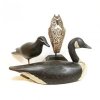









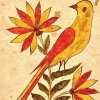
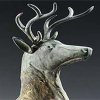



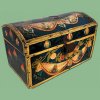

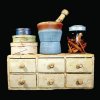



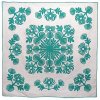

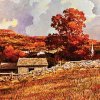


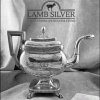
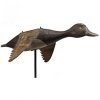


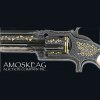

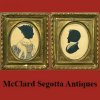













 The real surprise of the day was a Wind River Shoshone painted elk hide by Cadzi Cody depicting a buffalo hunt and ceremonial dance. Painted with natural and commercial pigments in brown, red, yellow, blue, and green on soft, thin elk hide, it measures 47¾" x 59". Enthusiasm in the room peaked as two phone bidders went far beyond the estimate of $15,000/18,000, finally topping out at $146,500, a price that shocked many at the auction. This hide painting sold at Cowan's on April 5, 2008, for $11,500.
The real surprise of the day was a Wind River Shoshone painted elk hide by Cadzi Cody depicting a buffalo hunt and ceremonial dance. Painted with natural and commercial pigments in brown, red, yellow, blue, and green on soft, thin elk hide, it measures 47¾" x 59". Enthusiasm in the room peaked as two phone bidders went far beyond the estimate of $15,000/18,000, finally topping out at $146,500, a price that shocked many at the auction. This hide painting sold at Cowan's on April 5, 2008, for $11,500.


